#Tuatha de Danann
Text
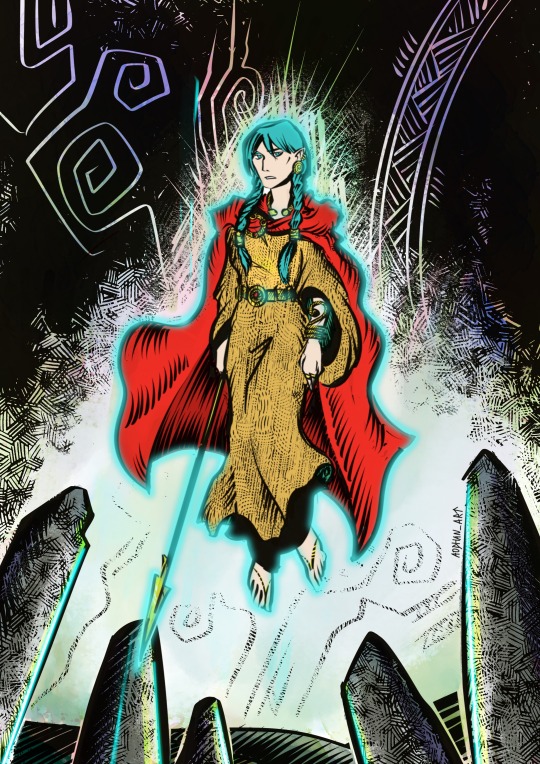
Tír na nÓg / Ulster cycle Hatsune Miku
#my art#hatsune miku#vocaloid hatsune#irish mythology#tuatha de danann#sidhe#fae art#ulster cycle#ireland#celtic#magic#fantasy art#procreate art
2K notes
·
View notes
Text

Nuada Airgetám
Here now with both hands, back in the seat of the King.
207 notes
·
View notes
Text





Feeling like a Faerie 🧚🏼♂️🍃
#dragonflyandbear#faecore#fae folk#fae#faerie#tuatha de danann#waterfall#fairy#fairycore#fairy wings
196 notes
·
View notes
Text

The Riders of the Sidhe (detail) by John Duncan, 1911.
Sidhe or else the Tuatha Dé Danann, mystical or fairy people of the Irish mythology and folklore.
#john duncan#mythology#celtic#irish#sidhe#tuatha de danann#fairy people#painting#folklore#world traditions#mysticism#symbolism#art
188 notes
·
View notes
Text

sometimes while journeying/meditating I see something that catches my eye and I make it a point to log as much away as possible for while I’m drawing it
This was a really special one. I tried to take as many notes as possible and record what I could, but this was the best I could get from memory. I’ll probably revisit the design and try to get it more accurate if possible (it’s still missing a few things), but I still like looking at it even just like this!
85 notes
·
View notes
Text
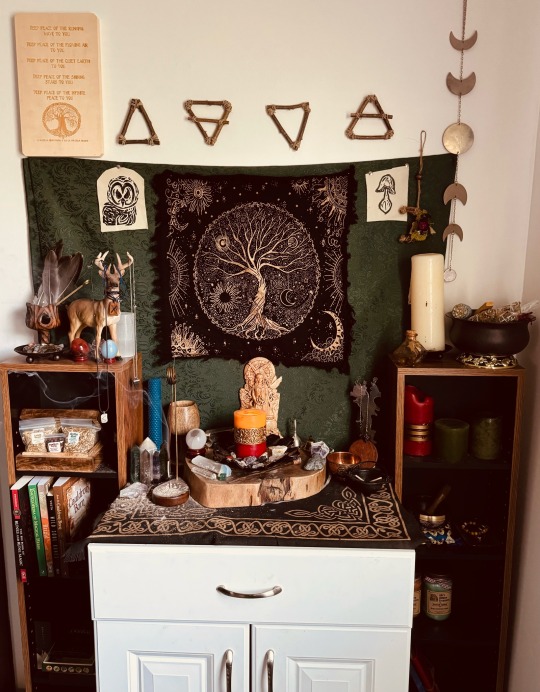
Forgive the mess, I’ve been doing a lot of work on this little corner lately. Both literally, spiritually and magically in order to get my altar to a place where it feels like new again.
And the result is not a disappointing one.
It feels like mine again. It feels like a small place of safety and spiritual awareness for me again. And I can tell this is only the beginning of me deepening my practice.
#pagan#paganism#druid#druidry#druidism#personal#my altar#pagan altar#Druid altar#Dagda#Morrigan#Brighid#Oghma#Lugh#tuatha de danann#celtic polytheism#Celtic polytheist
45 notes
·
View notes
Text
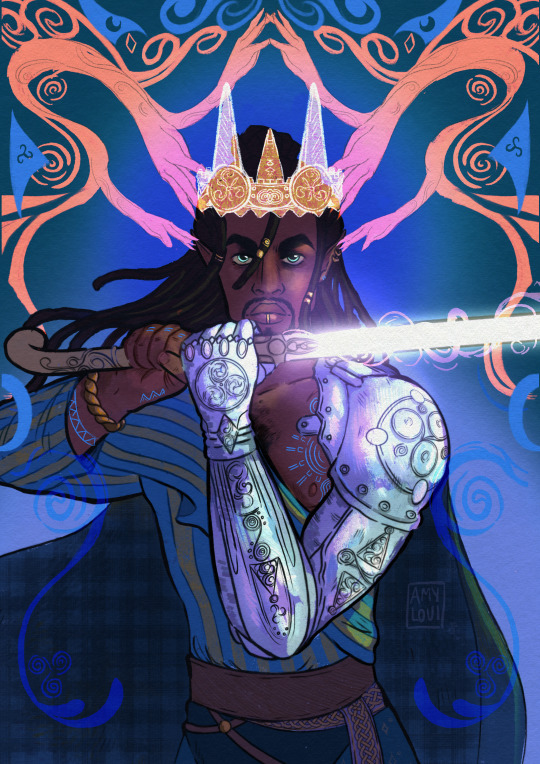
July Postcard, Nuada Airgetlám
King of the Tuatha Dé Danann, husband to Boann, Bres-enabler, Lugh-predecessor and owner of Fragarach, a very cool sword.
If you'd like a postcard, sign-up before the end of the month!
#artists on tumblr#irish mythology#nuada#tuatha de danann#celtic mythology#irish myths#fantasy illustration#original illustration#illustration#my art
320 notes
·
View notes
Text
I've been looking more into the myths and legends that inspired Tolkien, specifically into Irish Mythology, and there are actually a lot of very interesting similarities, particularly in Tir na nÓg and the Tuatha dé Danann.
Tir na nÓg means 'the land of the young', and is an enchanted isle off the west coast of Ireland where all were happy and suffered no illness or unhappiness. It is also called the Otherworld, and just like with Valinor, was often mistaken for a kind of heaven or afterlife when it was an actual, earthly place that could be reached by sailing across the sea(or through magic).
It was from Tir na nÓg that the Tuath Dé came, sailing eastwards in a fleet of 300 ships. Tuatha dé Danann means "people of the Goddess Danu". The Tuath Dé are immortal beings who are immune to aging and illness who came from across the sea and inhabited the lands of Ireland before Men ever came there.
Upon landing on Ireland's shores the Tuath dé immediately took the ships they had used and burned them to prevent anyone from returning to their homeland. The smoke from the fires could be seen for miles and the dark cloud lasted for three days straight.
In their first battle against their enemies and former inhabitants of Ireland the Formorians, the King of the Tuath Dé, Nuada, had his arm sliced clean off. Because he was no longer "unblemished", he thus lost his kingship, although a new hand was made for him that was made of silver. Nuada thus gained the epithet of Airgetlam, meaning 'silver hand/arm'.
They were powerful magic users, and during the years they spent there conquered most of Ireland, though at the cost of much blood.
But just like the Elves, so do the Tuath Dé and their power eventually fade at the coming of Men, the Milesians, the ancestors of the Irish people. In some tales the Tuath dé fight back and are driven underground by the Milesians, but in others versions the Tuath Dé foresee and accept their fate, and flee beneath the earth where they later become the sidhe, the fairy folk, or Little People, living in barrows and cairns. In other versions, the Goddess Danu sent many of the Tuath Dé to live in Tir na nÓg, and made homes beneath the earth for those who wished to stay.
Overall, very alike to Tolkien's Elves, specifically the Noldor!
#there's also Failinis who was an enormous magical hound#who was practically invincible and could slay any creature it came across#sounds very much like a certain hound of valinor...#silmarillion#Tolkien#Irish myth#tuatha de danann#tir na nog#Noldor#Valinor
156 notes
·
View notes
Text

It took me a long time to get the momentum going for this work but I finally finished it.
I created this as a devotional piece for Brigid, in thanks for her keeping the fire of creativity alive in me. Here she is depicted as a more modern incarnation an artist enjoying solitude among nature.
I hope this brings joy to other devotees and fans of celtic/irish folklore 💙💙💙
#my art#digital art#art#drawing#illustration#blue#brigid#goddess#celtic folklore#celtic paganism#celtic pagan#irish paganism#irish mythology#saint brigid#brighid#brid#tuatha de danann#devotional#deity work#deity worship#brigid goddess#brigid deity#paganism#i gcónaí
15 notes
·
View notes
Text
Irish Aos Sí - Una/Oonagh -









-The last of the named Irish fairy Queens-
The main site associated with her is in Tipperary and is called Knockshigowna today. 19th century sources suggest the name in Irish would be Cnoc-sidhe-una, or ‘hill of the fairy mound of Oonagh. Oonagh is described as an otherworldly beauty, with long shining golden hair that sweeps the ground and a silver dress that sparkles like crystals but is made of fresh dew. She has been known to be charismatic, connected to glamour, illusions and shapeshifting- and could turn into any animal so she could roam undetected.
Offerings I have found to be accepted are milk with honey, fresh cream, silver Jewlery, and Pyrite.
#tuatha de danann#irish paganism#irish polytheism#irish witch#witchblr#irish witchcraft#witchcraft#moodboard
17 notes
·
View notes
Text
Ode to Brighid
"O Brighid, fair daughter of the Good God,
Smith of shining silver and silvered songs,
The badgers, the snowdrops, they breach the snow:
Winter's crystal mantle, to welcome you,
Goddess! Patron of poets and plowmen alike
Take my prayer, let it be fuel for the flame."

[original composition]
#celtpol#brighid#brig#brigit#brigid#imbolc#saint brigid#prayer#pagan prayer#pagan poetry#tuatha de danann#from the writing desk
160 notes
·
View notes
Text
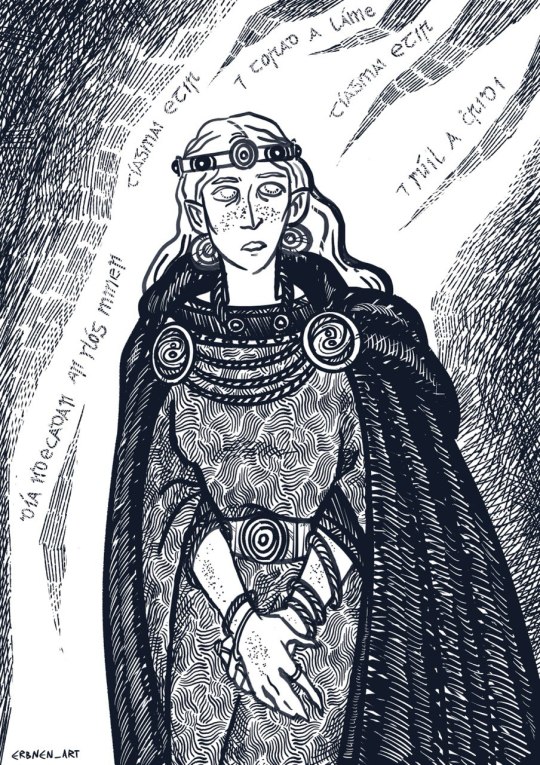
A commission of Brigid for @bloodtreachery (awww, it was SUCH a pleasure to do it!). I put an emphasis on her aspect as a poet, hence the fire of poetry ablaze!
The poem in the flames is a liberal translation of these lines from The Hosting of the Sidhe into Old Irish (courtesy of my wonderful husband):
...if any gaze on our rushing band,
We come between him and the deed of his hand,
We come between him and the hope of his heart.
#artists on tumblr#irish mythology#brighid#brigid#celtic paganism#gaelpol#paganblr#pagan art#illustration#commission#commissions open#tuatha de danann#irish goddesses#goddess brigid#druidism#celtic deities#aodhan morris#my art
414 notes
·
View notes
Text

I tried to be semi-serious about it, I really did… but the only thing I could think the entire time was “he looks like he gets good reception”
#lugh#lugh lamhfada#lugh samildanach#Celtic paganism#Irish paganism#Celtic mythology#Irish mythology#tuatha de danann#art#sketch#digital art#doodles
147 notes
·
View notes
Text
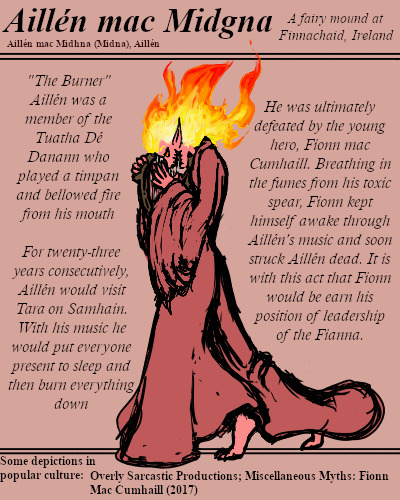
The fire-breathing Aillén, a wicked musician of the Tuatha dé Danann who was the bane of Tara for 23 years.
#BriefBestiary#bestiary#digital art#fantasy#folklore#legend#myth#mythology#fairy#fae#faerie#tuatha dé danann#tuatha de danann#samhain#aillén#aillén mac midgna#aillén mac midhna#aillén mac midna#the burner#aillén the burner#fionn mac cumhaill#boyhood deeds of fionn mac cumhaill#tara#hill of tara#irish folklore#irish mythology#irish legend#monster
116 notes
·
View notes
Text
The Real Mother of the Gods
Random internet articles will tell you how Danu is the mother of the Irish gods, like some overarching ancestral figure.
When reading the actual lore, this idea is pretty false. There may be a Danand, mother to three gods, but no great Danu. This is even argued, as a better translation may reveal they are three gods of skill, the word for skill confused or made into the name of a goddess.
While I was reading the verse portion of the Lebor Gabála Érenn volume 4 (LGE) on the tuatha, I discovered something interesting. Ethniu is named as mother to seven of the major gods: Luichtaine, Creidne, Goibnu, Dian Cecht, Nuada, Dagda, and Lugh.
Additionally, in the Cath Maige Tuired, if I am not mistaken, Ogma is named as one of her sons.
It is a shame this isn't discussed more. The prose text of the LGE does not mention this either. It mostly recounts who is the father to whom.
Ethniu is daughter of Balor, a Fomorian king. The Fomorians share ancestors with the gods, and live on islands close to Ireland.
Folk or fairy tales tell how Balor heard a prophecy that his grandson would kill him, so he locked Ethniu up, surrounded only by women, until a man looking for a magic cow Balor stole sneaks in and she gets pregnant with Lugh.
In the LGE it is mentioned she is given to Cian, a god, in marriage and they have Lugh.
But turning to the verse texts in the LGE, here is the small passage:
"They were powerful against their firm conflict,
The seven lofty great sons of Ethliu.
Dagda, Dian Cecht, Credne the wright,
Luichne the carpenter, who was an enduring.
consummate plunderer,
Nuada who was the silver-handed,
Lug Mac Cein, Goibninn the smith."
(The names have variations of how they're spelled in the LGE.)
Her first six sons are over different skills/roles, a smith, wright, carpenter, a physician, a king, and a druid/wizard/warrior, but her son Lugh possess all of the skills and becomes the king of the gods after Nuada’s death.
I think Ethniu/Ethliu should get the credit for being mother of the gods.
#irish mythology#tuatha de danann#irish myth#pagan#irish lore#celtic myth#goddess#irish gods#witchblr
37 notes
·
View notes
Text


When the interview process is WAY more thorough than you expected….
65 notes
·
View notes